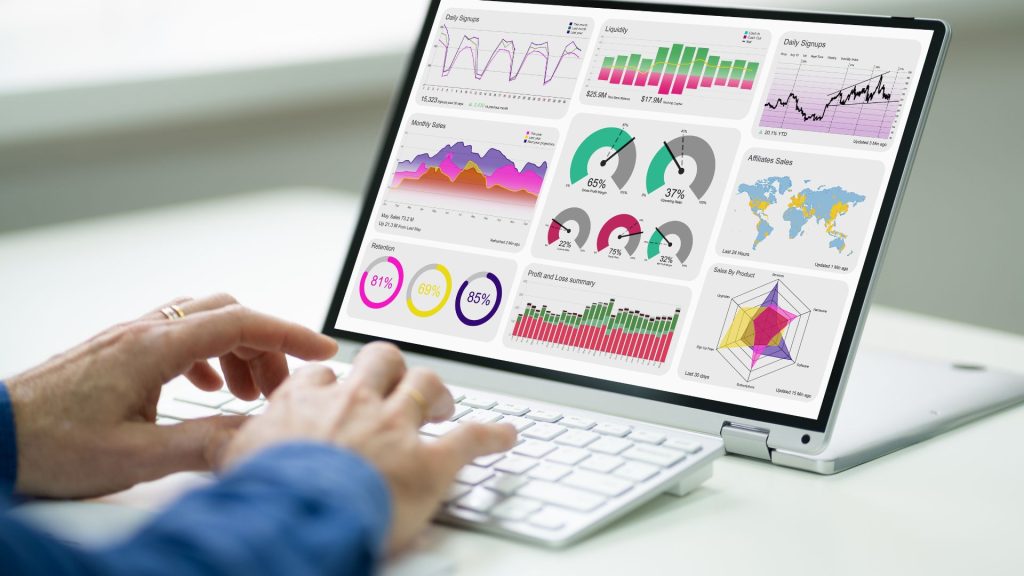Sanction dashboards are pivotal tools in the modern regulatory landscape, providing organizations with a real-time snapshot of their compliance status. As global business becomes more interconnected, the need for transparent and effective monitoring of sanction compliance grows. These dashboards not only simplify the tracking of potential risks, but they also offer visual representations of data, enabling quicker decision-making processes.
By centralizing pertinent information and presenting it in an accessible manner, sanction dashboards help businesses maintain adherence to international standards, avoiding potential legal repercussions and reputational damages.
Assessing whether an institution’s compliance conforms to the applicable laws, regulations and policies, such as AML and KYC policies, sanction policies, etc. is a complex process that demands the use of effective compliance technology and tools.
Compliance dashboards are developed and implemented to assess the overall compliance status, which aid in improving overall compliance governance.
Sanction Dashboards
Sanction compliance dashboards are part of the overall compliance dashboard that is used for the periodic sanction compliance review and reporting results to the compliance committee and the board of directors. The compliance committee and the board demand a pictorial view of the overall compliance status, and the specific components of the compliance program that includes sanction compliance reporting.
Compliance specialists ensure that periodic compliance reviews and monitoring results are uploaded and linked to the dashboard for compliance reporting purposes.
The compliance dashboards typically provide a review opportunity to the compliance specialists and executives, in assessing institution’s sanction risk profile, sanction compliance key risks, issues mitigation progress, and take appropriate compliance decisions.
Dashboards are used to design and implement a periodic review mechanism and help in the identification of the right level of abstraction for the information to be shown, provide visualization tools to distinctly sanction compliance risks and provide interlinked analysis perspectives.
The sanction compliance dashboards manage the large amount of sanction compliance data and convert it into meaningful sanction compliance concepts, for effective compliance analysis and performance improvement.
Sanction compliance dashboard solution provides with the ability to integrate and sort big data collected from various internal compliance and reporting systems, to create the visual story of sanction compliance. This eliminates the time and cost to request the data from lines of business, and operations for analysis and reporting.
Sanction compliance dashboard reflects the sanction compliance rate and the results of monitoring sanction compliance KPIs. Each KPI performance can be tracked with supporting data points in the dashboard.
Sanction compliance dashboard helps in improving the sanction compliance risk assessment, to ensure that predictive and existing sanction compliance risks are identified for assessment purposes.
Sanction compliance dashboard link monitoring results of following minimum sanction compliance metrics and KPIs, for a particular period:
effectiveness of sanction compliance program implementation
effectiveness of sanction compliance policies and procedures implementation
compliance status against the applicable sanction compliance laws and regulations
coverage of sanction individuals and entities lists for sanction compliance
instances of sanction match individuals and entities that are investigated
effectiveness of transactions monitoring progress, etc.
Final Thoughts
Assessing an institution’s adherence to laws, regulations, and policies, such as AML, KYC, and sanctions, requires sophisticated compliance technology. Compliance dashboards, including those specific to sanctions, offer a visual representation of an institution’s compliance status, simplifying reporting to oversight bodies like the board of directors. These dashboards, managed by compliance specialists, assimilate vast amounts of data, turning it into actionable insights and visual narratives. By centralizing and visualizing key performance indicators, these tools streamline the review process, helping institutions identify, assess, and mitigate potential risks, ensuring they remain compliant and proactive in an ever-evolving regulatory landscape.
